I grew up watching Shin-chan and other Japanese cartoons, so it’s obvious that Japan was on my bucket list! It was a fantasy land – the houses, the street lanes, the river, and the clouds always appealed to me, and I wanted to visit it once in my lifetime. That dream led me to research Japan inside out, and I came up with a list of the best places to visit in Japan, added to my bucket list.
However, knowing the places isn’t enough; you also need to know the best time to visit and keep your Japan visa ready with you. So, let’s not waste time and choose the places you want to visit in Japan from this list.
Historical & Cultural Places to Visit in Japan
Japan beautifully combines ancient traditions with the modern world. Majestic castles, peaceful temples, and charming heritage villages abound, offering countless opportunities to step back in time. From the wooden halls of Kyoto’s Nijo Castle to the grandeur of Himeji Castle and the serene lanes of Shirakawa-go, each destination tells a story.
Nijo Castle
Nijo Castle in Kyoto is like travelling back into Japan’s samurai days. Built in 1603, it was the home of the powerful Tokugawa shoguns. From the outside, it looks like a peaceful palace surrounded by moats and gardens- but inside, it’s full of surprises.
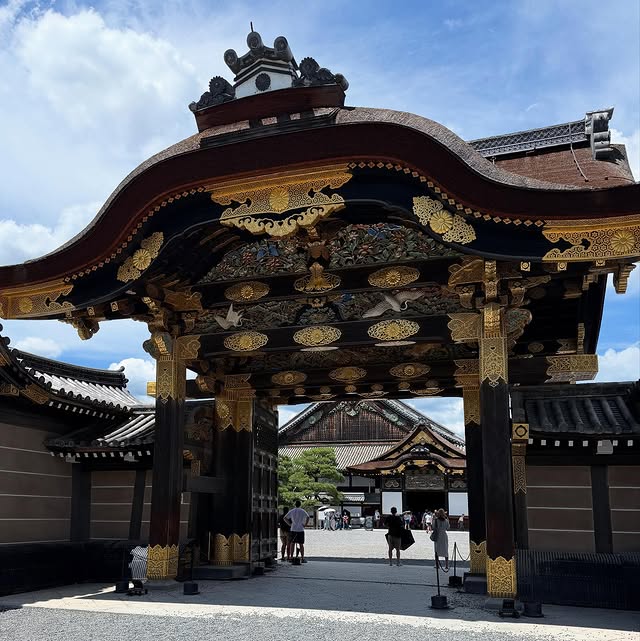
The wooden floors actually chirp like birds when you walk on them- an old trick to stop ninjas from sneaking in! You’ll also find beautiful painted sliding doors and grand halls where important meetings once took place.
Things to see:
- Ninomaru Palace with gold-leaf sliding doors
- Nightingale floors in the corridors
- Elegant gardens with ponds and pines
- Impressive gates and fortified walls
- Seasonal cherry blossoms and autumn colours
Don’t miss the lovely Ninomaru Garden, which looks picture-perfect in spring and autumn.
This castle is about feeling the stories of old Japan (Japan’s feudal era). If you’re visiting Kyoto, Nijo Castle is a must-see, as it is a UNESCO World Heritage Site offering a glimpse into the true beauty of the samurai era.
Note: We have some great recommendations for the best area to stay in Kyoto. Check out if you are planning to visit there!
Himeji Castle
Himeji Castle stands as one of the most exquisite and impeccably preserved castles in Japan. Known as the “White Heron Castle” because of its bright white walls and elegant design, it looks like a bird ready to take flight. Perched on a hilltop in Hyogo, this UNESCO World Heritage Site has survived wars, earthquakes, and centuries of change.

What’s special about it? It’s never been destroyed or rebuilt- this is the real thing from the early 1600s, offering a rare look at original Japanese castle architecture.
Things to see:
- Towering six-storey main keep
- Maze-like defensive paths to confuse enemies
- Panoramic views from the top floor
- Cherry blossoms in spring
- Traditional wooden interiors
Walking through Himeji Castle feels like stepping into a samurai film. It’s not just stunning to look at; it tells stories of feudal Japan with every stone and staircase. A visit here is a journey into the heart of Japan’s rich and powerful past.
Imperial Palace
Right in the heart of Tokyo, the Imperial Palace is a peaceful escape surrounded by moats, bridges, and lush greenery. It’s the official residence of Japan’s Emperor and stands where Edo Castle once stood during the shogunate era. While the inner grounds are mostly off-limits, the palace area still offers plenty to explore.

What makes it special is its blend of history and calm, right in the middle of a buzzing modern city. It’s like Tokyo’s quiet, royal heart.
Things to see:
- Nijubashi Bridge, the most photographed spot
- Peaceful East Gardens are open to the public
- Ruins of the old Edo Castle
- Seasonal flowers and traditional stone walls
- Guided tours of selected areas (by reservation)
The Imperial Palace is an ideal place to observe how Japan seamlessly blends its imperial past with the present. If you’re in Tokyo, it’s a lovely spot for a scenic walk and a glimpse into the country’s royal history.
Hiroshima Peace Memorial Park
We are all aware of the dark past of Hiroshima, aren’t we? It is a city that turned tragedy into a message of peace. At its heart lies the Hiroshima Peace Memorial Park, built to honour the victims of the atomic bomb dropped in 1945. Once a busy commercial area, the park now stands as a calm, green space filled with hope, remembrance, and reflection.

What makes it unique is the Atomic Bomb Dome, one of the few structures that survived the blast, now preserved as a powerful symbol of peace and resilience.
Things to see:
- Atomic Bomb Dome (Genbaku Dome)
- Hiroshima Peace Memorial Museum
- Children’s Peace Monument
- Flame of Peace and Memorial Cenotaph
- Beautiful walking paths and cherry blossoms in spring
A visit to Hiroshima isn’t just sightseeing- it’s a deeply moving experience. The park tells a powerful story about the past while promoting a better, peaceful future. It’s one of the most important places to visit in Japan for those who want meaning behind the beauty.
Edo- Tokyo Open Air Architectural Museum
Ever wondered what Tokyo looked like centuries ago? The Edo-Tokyo Open Air Architectural Museum lets you walk through time-literally. Located in a quiet park in western Tokyo, this outdoor museum showcases historic buildings from the Edo, Meiji, and Showa periods, all relocated and carefully restored.
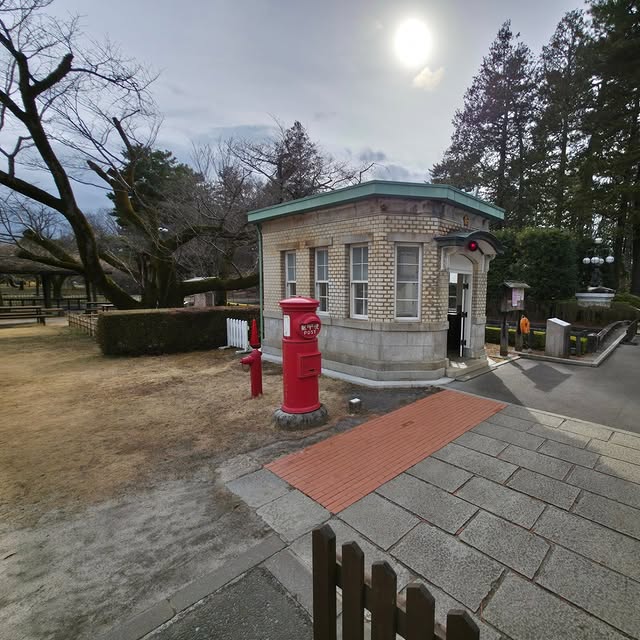
What’s unique? It’s like a full-size time machine! You can enter old merchant houses, farmhouses, bathhouses, and even a retro police box—perfect for history buffs and curious wanderers.
Things to see:
- Traditional thatched-roof farmhouses
- Old Tokyo shops and cafes
- Meiji-era Western-style homes
- Vintage tram and firehouse
- Seasonal events and craft demonstrations
This museum is a hidden gem that brings Japan’s everyday history to life. It’s peaceful, hands-on, and incredibly photogenic. If you want to explore how people actually lived in old Tokyo, this spot gives you a vivid, open-air glimpse of Japan’s architectural and cultural evolution.
Gion (Geisha District)
What makes Gion truly special is the chance to spot a real-life geiko (Kyoto’s word for geisha) or a maiko (apprentice) gracefully gliding down the street in full kimono and makeup. It’s an experience like no other!
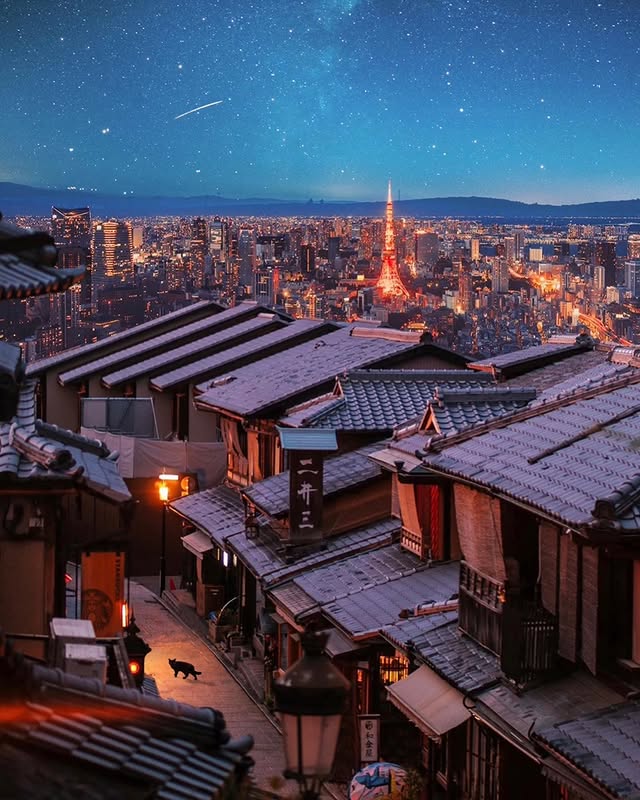
Gion is Kyoto’s most famous geisha district, and visiting there is one of the best things to do in Kyoto. Walking through it, you will feel as if you are entering a living painting. With its narrow stone lanes, wooden tea houses, and glowing lanterns, the area oozes traditional charm, especially in the soft light of evening.
Things to see:
- Hanamikoji Street with historic tea houses
- Yasaka Shrine at the edge of the district
- Shirakawa Canal with cherry blossoms in spring
- Traditional kaiseki dining experiences
- Gion Corner for cultural performances
Gion is a place where old Kyoto still lives and breathes. Whether you’re hoping to catch a glimpse of a geisha or simply want to wander back in time, Gion offers an unforgettable peek into Japan’s elegant past.
Matsumoto Castle
Matsumoto Castle is one of Japan’s most stunning original castles- and it’s hard to miss with its striking black exterior, earning it the nickname “Crow Castle.” Set against the backdrop of the Japanese Alps, it looks like something out of a samurai movie, especially when reflected in its surrounding moat.

What makes it unique is that it’s one of the few original wooden castles still standing from Japan’s feudal era. Built in the 1500s, it’s full of charm, history, and impressive craftsmanship.
Things to see:
- Six-storey main keep with steep wooden stairs
- Views of the Northern Alps from the top
- Samurai armour and weapons displays
- Moon-viewing tower (Tsukimi Yagura)
- Lovely cherry blossoms in spring
Matsumoto Castle isn’t just beautiful- it tells tales of warriors, strategy, and survival. Whether you’re a history lover or a photography fan, this castle offers a powerful, picturesque slice of old Japan that’s well worth the visit.
Shirakawa-go
Shirakawa-go is a beautiful village located in the mountains of Gifu Prefecture. It looks magical throughout the year. The village is a UNESCO World Heritage Site known for its unique “gassho-zukuri” farmhouses. These houses have steep thatched roofs that can handle heavy snow. They offer a rare glimpse into rural Japanese life from many years ago.
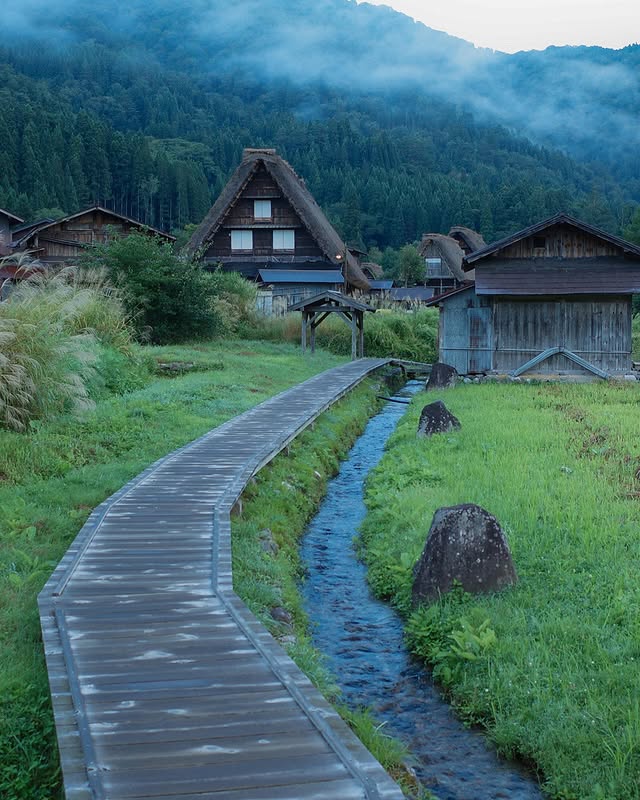
What makes it truly unique is that many of these traditional homes are still lived in today, and some are open for visitors to explore.
Things to see:
- Gassho-style farmhouses, some over 250 years old
- Wada House (open to the public)
- Shiroyama Viewpoint for panoramic shots
- Shirakawa-go no Yu (local onsen)
- Winter illumination (magical snowfall and lights)
Whether covered in snow or glowing under autumn leaves, Shirakawa-go feels like a peaceful time capsule. It’s a great place to slow down, soak in nature, and experience traditional Japan in its most charming form.
Spiritual or Religious Places to Visit in Japan
Japan’s spiritual side is as enchanting as its natural beauty. From Kyoto’s golden temples to sacred shrines tucked in mountain forests, each place radiates peace and devotion. Walk through the iconic Torii gates of Fushimi Inari, soak in the serenity of Kiyomizu-dera, or admire the floating Itsukushima Shrine- these spots connect you to the soul of Japan. A must for seekers of calm, culture, and deeper meaning.
Kiyomizu-dera Temple
Kiyomizu-dera is one of Kyoto’s most iconic temples, and the views are just as breathtaking as the temple itself. Perched on a hillside, this UNESCO World Heritage Site overlooks the city and is especially stunning during the cherry blossom and autumn leaf seasons.

The temple’s name means “Pure Water Temple,” named after the Otowa Waterfall that flows below. Visitors can even drink from the sacred streams, each said to bring health, success, or love.
Things to see:
- The massive wooden stage with panoramic views
- Otowa Waterfall’s three sacred streams
- Jishu Shrine for love and matchmaking
- Seasonal beauty in spring and autumn
- Charming shops on the approach road
What makes Kiyomizu-dera special is its uplifting atmosphere and spiritual energy. It’s not just about history- it’s about hope, wishes, and beauty all rolled into one. Whether you’re a believer or just curious, this temple offers peace and perspective in the heart of Kyoto.
Shensho ji
Senso-ji (often spelt Shenso-ji) is Tokyo’s oldest and most beloved Buddhist temple. It is located in the lively district of Asakusa, which is one of the best places to stay in Tokyo. With its giant red lantern and iconic Thunder Gate (Kaminarimon), it welcomes millions of visitors every year- and it’s easy to see why.
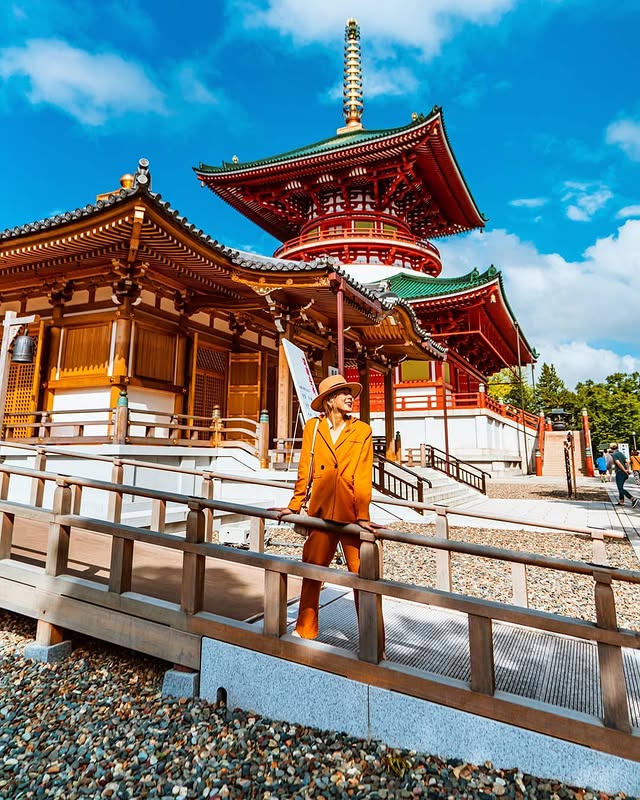
What makes Senso-ji truly special is its deep connection to the city’s soul. Built in the 7th century, it’s survived wars, fires, and time, standing strong as a symbol of hope and healing.
Things to see:
- Kaminarimon Gate with its giant red lantern
- Nakamise shopping street is full of souvenirs and snacks
- Main hall (Hondo) for prayers and incense offerings
- Five-storey pagoda
- Peaceful gardens and statues
From the moment you walk through its gates, you’re surrounded by energy, colour, and tradition. Whether you’re there to make a wish, snap a photo, or soak in history, it’s a must-visit place in Tokyo.
Fushimi Inari Taisha (Torii Gates)
Fushimi Inari Taisha is one of Japan’s most famous and visually stunning shrines. Located in southern Kyoto, it’s known for its endless rows of bright red torii gates that wind through a peaceful forested hillside- an unforgettable sight and walk!
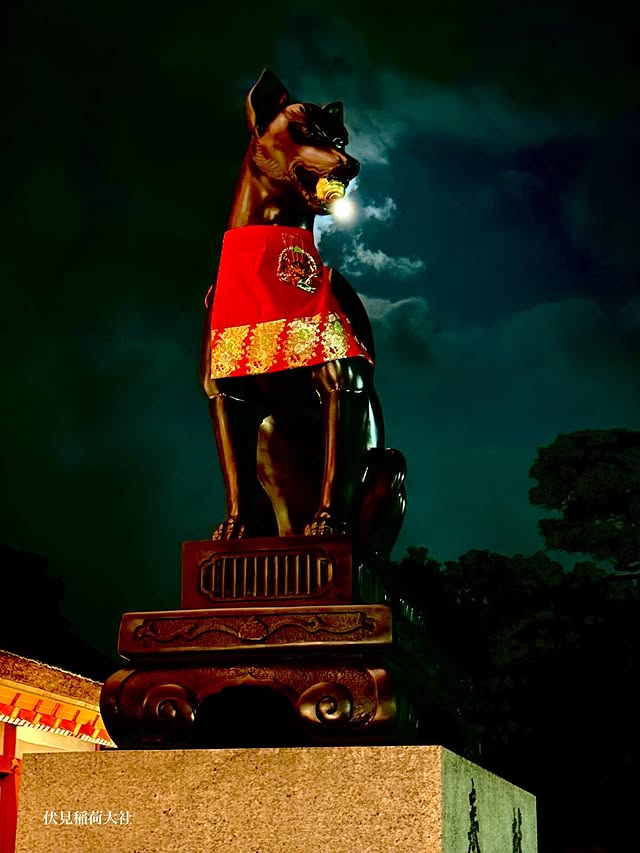
This shrine is dedicated to Inari, the Shinto god of rice, prosperity, and business. What makes it truly unique is the thousands of donated torii gates, each symbolising gratitude or a wish granted.
Things to see:
- The iconic Senbon Torii (thousands of gates)
- Fox statues (Inari’s messengers) throughout the grounds
- Mount Inari walking trail with small shrines along the way
- Sunset views from halfway up the mountain
- Local food stalls at the entrance
Fushimi Inari isn’t just a photo stop- it’s a peaceful, spiritual journey. Whether you hike to the top or explore the base, this shrine offers a magical, almost otherworldly experience. It’s one of Kyoto’s true highlights for both spiritual seekers and curious travellers.
Itsukushima Shrine (Floating Torii Gate)
Itsukushima Shrine on Miyajima Island is one of Japan’s most iconic spiritual sights. Famous for its “floating” torii gate, the shrine appears to hover above the sea during high tide- a magical, picture-perfect view that draws visitors from all over the world.
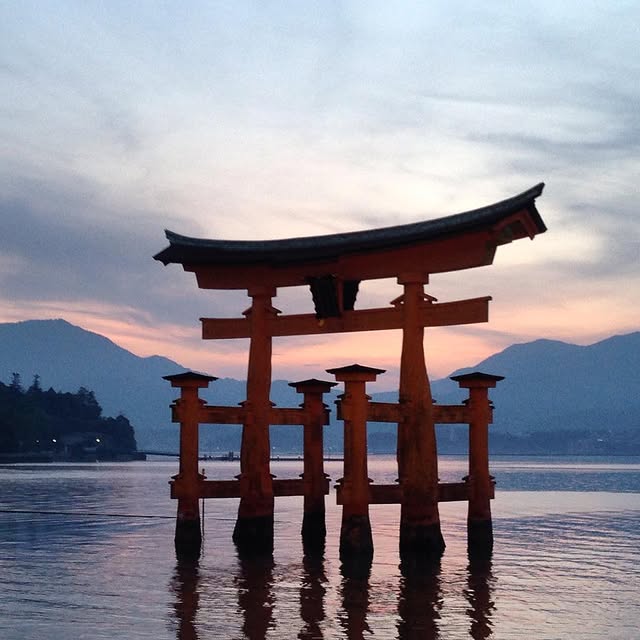
Dedicated to the Shinto goddesses of the sea and storms, the shrine has stood gracefully since the 12th century. Its unique design blends beautifully with the surrounding nature, making it feel like part of the landscape.
Things to see:
- The giant floating torii gate (especially at high tide)
- Main shrine buildings are built on stilts above the water
- Scenic seaside boardwalks and forested trails
- Deer roam freely around the island
- Daisho-in Temple nearby for a peaceful retreat
Itsukushima Shrine isn’t just about beauty- it’s about harmony between nature and faith. A visit here offers calm, reflection, and incredible views, especially at sunset. It’s a must-visit for anyone exploring Japan’s spiritual and scenic treasures.
Kinkaku-ji
Kinkaku-ji is one of Japan’s most dazzling temples- and it really lives up to its name. Covered in real gold leaf, this Golden Pavilion glows brightly in the sunlight, beautifully reflected in the still waters of the surrounding pond.
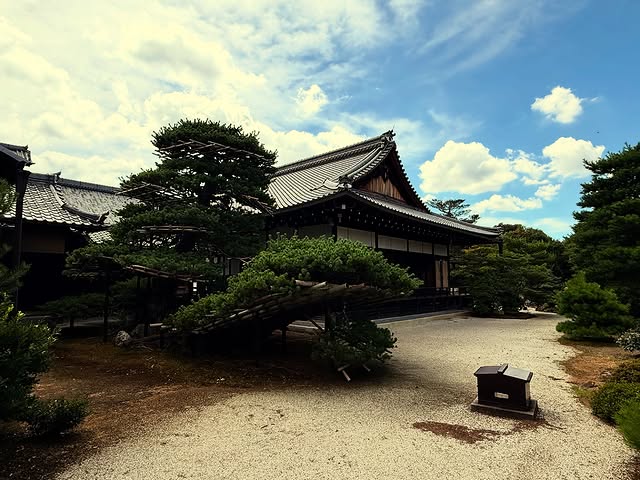
Originally built in the 14th century as a retirement villa for a shogun, it later became a Zen temple. Its shimmering beauty and peaceful setting make it feel almost unreal, like something out of a dream.
Things to see:
- The three-storey golden pavilion with a unique architectural styles
- Mirror-like Kyoko-chi Pond
- Small shrine for good luck in studies and exams
- Traditional Japanese gardens with winding paths
- Seasonal scenery- snow, blossoms, or autumn leaves
Kinkaku-ji is more than just a photo opportunity. It’s a place where calm, elegance, and nature come together in perfect harmony. Whether you visit in winter or spring, it’s one of Kyoto’s most unforgettable spiritual spots- and a true symbol of Japan’s timeless beauty.
Happening Places to Visit in Japan
Japan isn’t just temples and tradition- it’s full of fun and thrills too! From the magical world of Tokyo Disneyland to the breathtaking digital art at TeamLab and the adrenaline rush of Fuji-Q Highland, adventure is around every corner. Whether you’re relaxing in an onsen, exploring vibrant districts like Roppongi, or hiking through national parks, there’s something for every kind of explorer. Perfect for families, thrill-seekers, and curious wanderers!
Tokyo Disneyland
Tokyo Disneyland is where your favourite childhood dreams come to life. Just outside central Tokyo in Chiba, this magical theme park is packed with exciting rides, colourful parades, and all your beloved Disney characters.
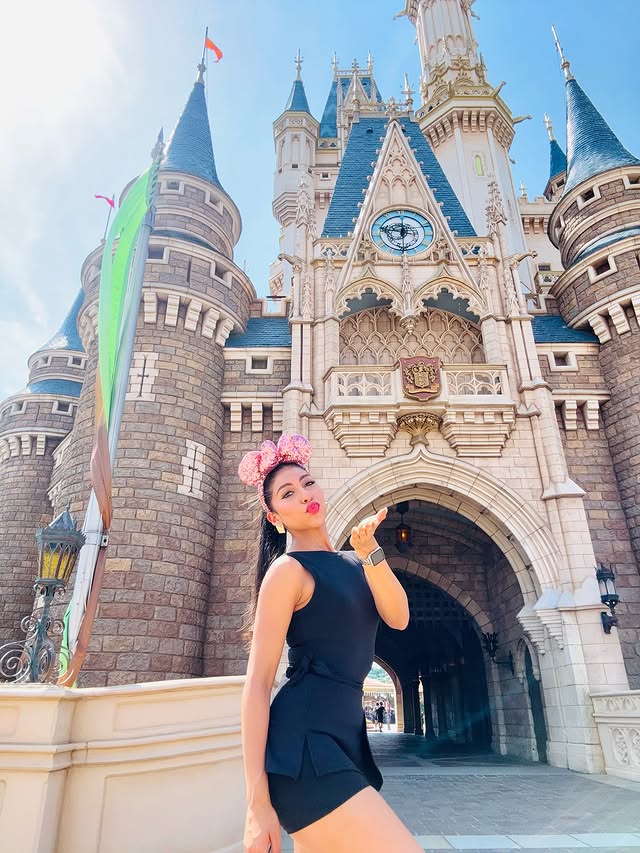
What makes it extra special is that it blends classic Disney charm with Japanese attention to detail- everything is clean, organised, and full of heart.
Things to see:
- Splash Mountain and Space Mountain for thrill-seekers
- The Enchanted Tiki Room and Pooh’s Hunny Hunt for families
- Cinderella’s Castle, the park’s shining centrepiece
- Daytime and night-time parades full of music and lights
- Seasonal events (Halloween, Christmas, and more!)
Tokyo Disneyland is the perfect escape from reality. Whether you’re five or fifty-five, there’s a kind of magic here that lifts your mood instantly. It’s one of Japan’s top outdoor adventures and a must-visit for fans of fun, fantasy, and fairy tales.
TeamLab Borderless Tokyo
TeamLab Borderless isn’t just a museum- it’s a mind-blowing, immersive world of digital art that you can touch, walk through, and even become part of. Located in central Tokyo, this interactive experience blends technology, creativity, and imagination like nothing else.

What makes it unique is that there are no maps or boundaries- the art moves, shifts, and responds to you. Every visit feels like stepping into a living, glowing dream.
Things to see:
- Crystal World with walls of shimmering LED lights
- Forest of Resonating Lamps
- Floating Nest and weightless digital art
- Flowers that bloom and fade as you move
- Interactive zones where kids can play and explore
Whether you’re snapping photos or just soaking it all in, TeamLab Borderless is unlike any other adventure in Japan. It’s fun, futuristic, and perfect for couples, families, or solo explorers. Be ready to lose yourself- and love it.
Universal Studios Japan (Osaka)
Universal Studios Japan (USJ) is one of the best places to visit in Osaka. It is where movies, magic, and adrenaline all come together. It’s one of the most exciting theme parks in Japan, packed with rides, shows, and immersive worlds based on your favourite films.
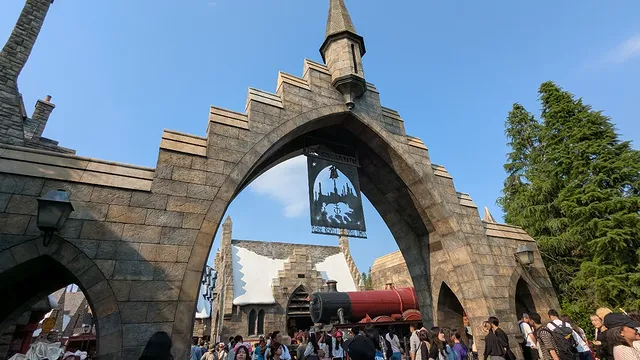
What makes USJ truly special is The Wizarding World of Harry Potter- it feels like you’ve been flown straight to Hogwarts!
Things to see:
- Harry Potter rides and a butterbeer break at Hogsmeade
- Super Nintendo World with Mario Kart and Yoshi’s Adventure
- Minion Park for fun and silliness
- Thrilling rides like Jurassic Park: The Ride and The Flying Dinosaur
- Evening shows and seasonal events (like Halloween Horror Nights!)
USJ is pure fun from start to finish. This place has something for everyone, whether you love movies, enjoy thrills, or like theme parks. If you’re planning to visit, make sure to consider the best area to stay in Osaka, as staying near the park lets you enjoy attractions without long commutes.
Kusatsu Onsen
Kusatsu Onsen is one of Japan’s top hot spring resorts, nestled in the mountains of Gunma Prefecture. Known for its high-quality mineral waters and healing properties, this town is all about slowing down and soaking it all in literally!

At the heart of Kusatsu is the Yubatake (hot water field), where steaming sulphur-rich water gushes out and fills the air with a warm, earthy aroma. The sight is both calming and spectacular, especially at night when it’s beautifully lit.
Things to do:
- Soak in public baths and traditional ryokan onsen
- Watch the Yumomi water-cooling performance
- Stroll around the Yubatake and enjoy footbaths
- Visit the Sainokawara Open-Air Bath surrounded by nature
- Hike nearby volcanic trails in warmer months
Kusatsu Onsen is perfect for relaxation after a busy travel itinerary. With a timeless atmosphere and steaming hot waters, it’s a must-visit for every wellness-loving traveller.
Roppongi (Tokyo)
Roppongi is Tokyo’s go-to neighbourhood for nightlife, culture, and entertainment—all rolled into one. Known for its buzzing bars, stylish clubs, and international vibe, it’s the perfect place to experience Tokyo after dark.

What makes Roppongi unique is that it’s not just about parties—it also has art museums, rooftop views, and amazing dining options that suit all kinds of travellers.
Things to see and do:
- Roppongi Hills and Tokyo Midtown for shopping and sky-high views
- Mori Art Museum and teamLab exhibitions
- Tokyo Tower is just a short walk away
- Trendy rooftop bars and karaoke joints
- Late-night eats and international cuisine
Whether you’re up for a classy night out or a casual pub crawl, Roppongi has it all. It’s also great during the day for art lovers and city views. If you want to see modern Tokyo in full swing, Roppongi is the place to be stylish, lively, and always awake.
Fuji-Q Highland
Fuji-Q Highland is a thrill-seeker’s paradise, sitting right next to the majestic Mount Fuji. This theme park is all about heart-racing rides, epic views, and unforgettable fun- all with Japan’s most iconic mountain as your backdrop.

What makes it stand out? It’s home to some of the world’s scariest roller coasters, including Guinness World Record holders!
Things to see and do:
- Eejanaika and Takabisha- two of the most intense coasters on Earth
- Fuji Panoramic View from the Ferris wheel
- Haunted Hospital- one of the world’s longest haunted house walks
- Thomas Land for younger kids
- Mount Fuji photo ops all around the park
Whether you’re screaming on a drop ride or enjoying a view of Fuji from the teacups, Fuji-Q Highland mixes natural beauty with pure adrenaline. It’s a top pick for anyone looking to add a bit of wild fun to their Japan adventure.
Nikko National Park
Nikkō National Park is where nature, culture, and spiritual beauty come together in one unforgettable outdoor escape. Located just a couple of hours from Tokyo, it’s packed with scenic landscapes, ancient shrines, and relaxing hot springs.
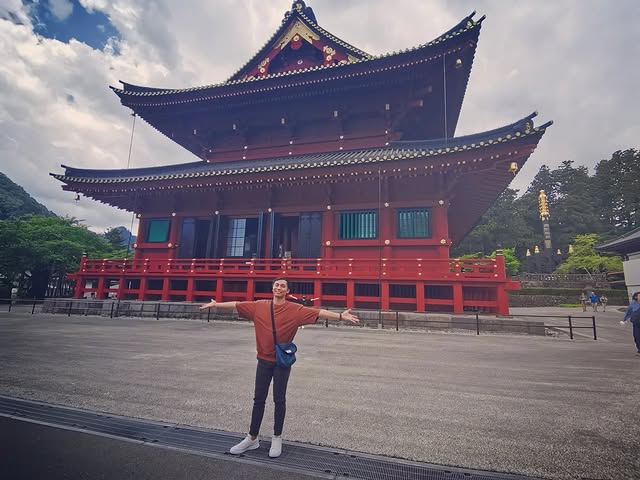
What makes Nikkō special is that it’s home to UNESCO-listed temples and shrines, all set against a backdrop of mountains, waterfalls, and forests. It’s peaceful, picturesque, and full of hidden gems.
Things to see and do:
- Toshogu Shrine-ornate and gold-detailed, dedicated to Tokugawa Ieyasu
- Kegon Falls- one of Japan’s tallest waterfalls
- Lake Chuzenji with stunning seasonal views
- Hiking trails through forests and marshlands
- Relaxing onsen in Yumoto Onsen village
Whether you’re hiking, temple-hopping, or simply breathing in the mountain air, Nikkō National Park offers the perfect mix of adventure and calm. It’s ideal for a refreshing break from the city, and a true showcase of Japan’s natural and spiritual charm.
Akihabara
Akihabara is Tokyo’s buzzing playground for gamers, anime lovers, tech fans, and curious explorers. Known as Japan’s “Electric Town,” it’s where pop culture meets pixel power—all lit up in neon.
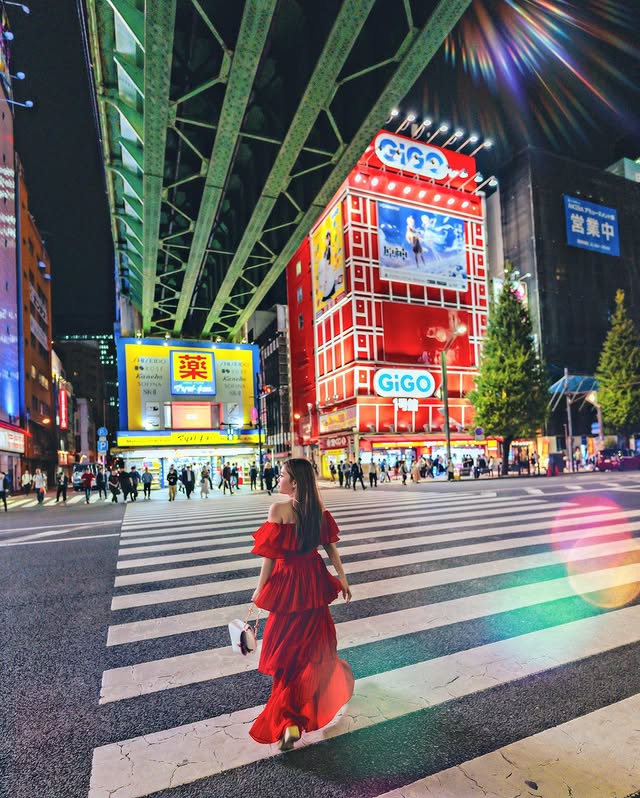
What makes Akihabara stand out is its deep dive into otaku culture- from anime figures and cosplay cafés to multi-storey arcades and vintage video games. It’s fast, fun, and completely over-the-top (in the best way).
Things to see and do:
- Explore multi-level anime, manga, and figure stores
- Visit retro and modern arcades (like SEGA or Taito Station)
- Check out maid cafés for a quirky Japanese experience
- Shop for gadgets, electronics, and rare finds
- Don Quijote Akihabara- great for souvenirs and snacks
Whether you’re geeking out over rare Pokémon cards or just soaking in the wild vibe, Akihabara is non-stop entertainment. It’s one of Tokyo’s most exciting neighbourhoods and a must-visit for anyone who loves tech, anime, or a bit of chaos with their shopping.
Takayama
Takayama is a charming town in the Japanese Alps, known for its traditional atmosphere and historic sake breweries. The town has well-preserved streets from the Edo period, and some of its sake breweries have been around for over 300 years.

Thanks to the region’s pure mountain water and cold climate, Takayama produces some of Japan’s finest sake. Visiting the breweries isn’t just about tasting- it’s about experiencing the craftsmanship and passion behind every bottle.
Things to do:
- Brewery-hopping in the Sanmachi Suji historic district
- Taste test a variety of local sake (many offer free or low-cost samples)
- Learn how sake is made using traditional methods
- Spot the sugidama (cedar balls) hanging outside breweries
- Take home beautifully bottled sake as a souvenir
For foodies and curious travellers, Takayama offers an adventure for the senses, where every sip tells a story of Japanese heritage and hospitality.
Kabuki-za
Kabuki Theatre isn’t just a performance- it’s a lively explosion of drama, colour, and tradition! And you can watch it at the Kabuki-za theatre. Dating back to the 1600s, Kabuki is Japan’s traditional stage art known for its extravagant costumes, expressive actors, and rotating stages. Watching it live is like stepping into a historical fantasy filled with powerful emotions and dramatic flair.

The unique twist? All roles, even female characters, are played by men, adding another layer of artistry to the show.
Things to see:
- Lavish costumes and detailed makeup
- Dynamic stage sets and trapdoors
- Short translated headsets for visitors
- Live musical accompaniments with traditional instruments
It’s not your usual night out, but one that immerses you in the soul of Japanese performance art. Whether you’re a theatre fan or just curious, Kabuki is a thrilling cultural experience you won’t forget.
Natural Wonders to Explore in Japan
Japan’s natural beauty is breathtaking. From the iconic Mount Fuji to the bamboo groves of Arashiyama and the clear waters of Lake Kawaguchi, every view is postcard-worthy. With waterfalls, flower fields, and dramatic coastlines, these landscapes provide a peaceful escape for nature lovers and photographers alike!
Mount Fuji
Mount Fuji is Japan’s most iconic symbol. Towering at 3,776 metres, this perfectly cone-shaped volcano can be seen from miles away and is absolutely breathtaking, especially when snow-capped in winter.
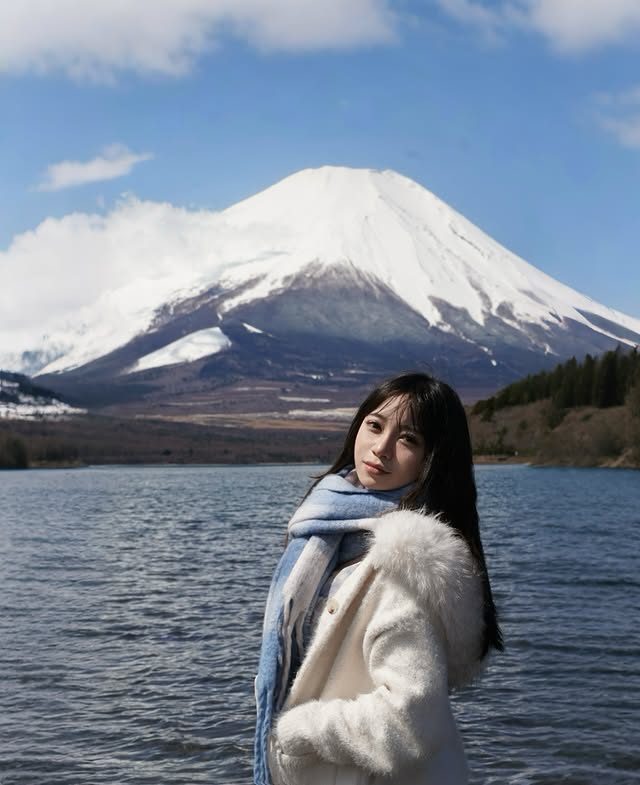
What makes Mount Fuji truly special is that it’s both a natural wonder and a sacred site. It’s been inspiring artists, poets, and pilgrims for centuries- and it’s even a UNESCO World Heritage Site.
Things to see and do:
- Climb to the summit (July to early September)
- Take in views from Lake Kawaguchi or the Chureito Pagoda
- Visit Fuji Five Lakes for hiking, boating, and hot springs
- Explore Fuji Subaru Line 5th Station
- Snap stunning sunrise or sunset photos
Whether you’re admiring it from afar or hiking to the top, Mount Fuji is a must-see. It’s more than a mountain- it’s an experience, a postcard view, and a spiritual journey all in one.
Chureito Pagoda
Chureito Pagoda is a beautiful spot in Japan. It sits on a hillside with a view of Mount Fuji. With its bright red five-storey pagoda framed by cherry blossoms in spring or fiery leaves in autumn, it’s a view you’ll never forget.
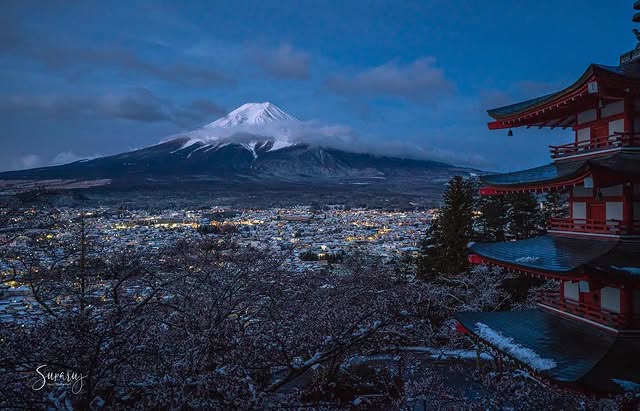
What makes it truly special is the iconic combo of Mount Fuji + pagoda + seasonal beauty- a postcard comes to life, especially at sunrise.
Things to see and do:
- Climb the 400+ steps for that famous panoramic view
- Visit during cherry blossom season (late March–early April)
- Snap stunning photos with Mount Fuji in the background
- Explore Arakurayama Sengen Park
- Enjoy a peaceful break away from the crowds
Chureito Pagoda is more than a photo stop- it’s a calm, beautiful place to soak in Japan’s natural and spiritual charm. If you’re chasing the ultimate Mount Fuji view, this is where you’ll find it.
Arashiyama Bamboo
Walking through the Arashiyama Bamboo Grove feels like stepping into another world—quiet, green, and almost otherworldly. Towering stalks of bamboo sway gently in the breeze, creating a calming rustle and a soft play of light that’s simply magical.
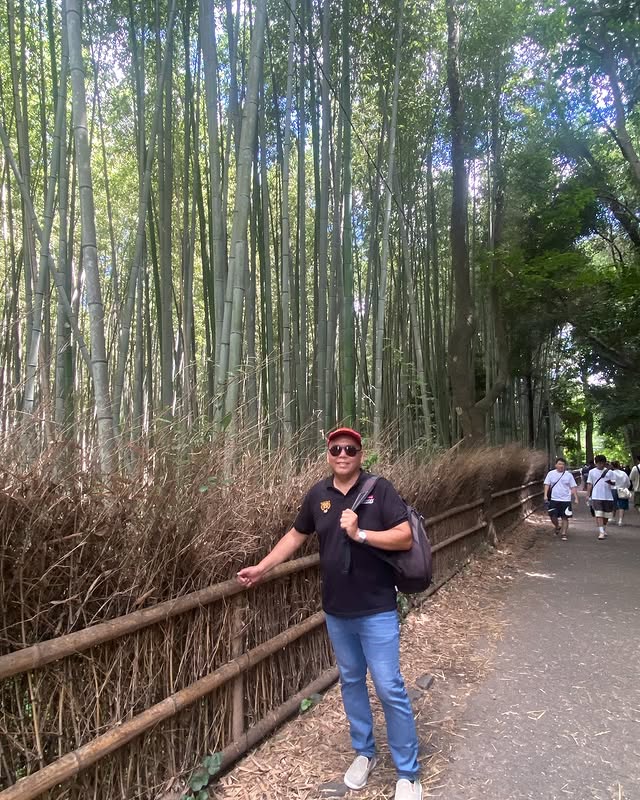
What makes it special is the atmosphere- there’s something truly peaceful about being surrounded by such tall, graceful greenery. It’s one of Kyoto’s most photographed spots, and for good reason.
Things to see and do:
- Walk the bamboo path early in the morning for fewer crowds
- Visit nearby Tenryu-ji Temple (a UNESCO site)
- Take a rickshaw ride through the grove
- Explore the scenic Ōi River and Togetsukyo Bridge
- Spot monkeys at the nearby Iwatayama Monkey Park
Arashiyama isn’t just about the bamboo- it’s a full nature experience with mountains, temples, and rivers all in one spot. It’s a must-visit for anyone wanting to see the quieter, greener side of Kyoto.
Lake Kawaguchi
Lake Kawaguchi is one of the best spots to admire Mount Fuji in all its glory. Calm, scenic, and easy to reach, it’s part of the Fuji Five Lakes region and offers breathtaking reflections of the iconic peak on clear days.
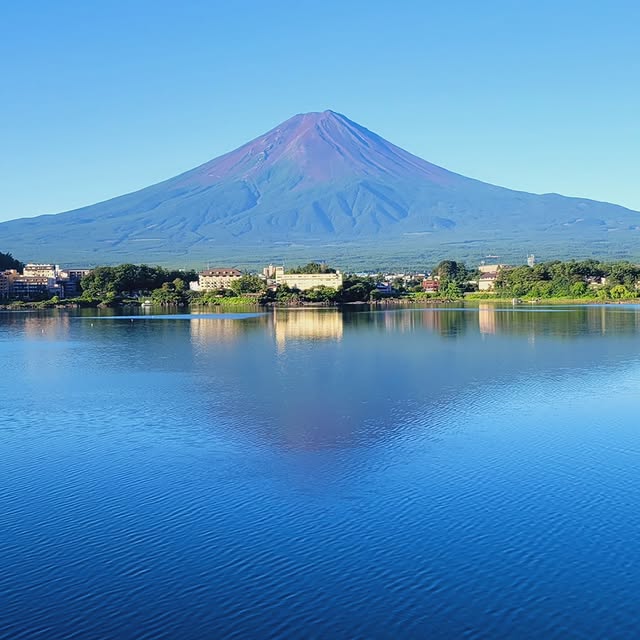
What makes this lake unique is its panoramic Fuji views, especially during cherry blossom season in spring and the fiery maple colours of autumn.
Things to see and do:
- Capture postcard shots of Mount Fuji mirrored in the lake
- Ride the Mt. Fuji Panoramic Ropeway
- Relax in lakeside hot spring baths
- Explore Kawaguchiko Music Forest Museum
- Take scenic boat rides or try kayaking
Lake Kawaguchi is peaceful yet full of charm, offering something for everyone, from photographers and hikers to families and romantics. It’s an ideal base to explore Mt. Fuji area while soaking in the beauty of Japan’s nature at a slower, more relaxing pace.
Cape Manzamo
Cape Manzamo is a dramatic seaside cliff on Okinawa’s west coast that looks like an elephant’s trunk reaching into the sea! With the turquoise ocean crashing below and golden sunsets lighting up the sky, it’s a stunning place for a peaceful coastal escape.

What makes it special is the rock formation shaped like an elephant’s nose, paired with some of the best sunset views in Okinawa.
Things to see and do:
- Walk the cliffside path for panoramic sea views
- Capture the elephant trunk-shaped rock in your photos
- Visit during sunset for dreamy golden hour scenes
- Explore nearby beaches and snorkelling spots
- Enjoy Okinawan street snacks from local vendors
Cape Manzamo is perfect if you’re looking for fresh sea breeze, dramatic views, and a slower pace. It’s one of those simple yet unforgettable spots that show off Japan’s coastal beauty in a unique way.
Tottori Sand Dunes
Yes, Japan has a desert-like wonder! The Tottori Sand Dunes stretch along the coast of the Sea of Japan and offer a completely different vibe- rolling golden sands, wind-sculpted patterns, and ocean views in the distance.

What’s unique? These are the largest sand dunes in Japan, and you can actually ride camels here! It feels more like Morocco than Japan, making it a fun and unexpected stop.
Things to see and do:
- Walk or slide down the dunes barefoot
- Ride a camel or try sandboarding
- Visit the Sand Museum with incredible sand sculptures
- Paraglide over the dunes for an epic view
- Catch the sunset over the ocean
The Tottori Sand Dunes are perfect if you’re after something adventurous and off-the-beaten-track. It’s a refreshing change from temples and cities, offering fun, wide-open spaces and photo-worthy landscapes.
Naoshima Island
Naoshima Island is where nature meets modern art- and it works beautifully. Surrounded by the calm Seto Inland Sea, this quiet island is full of beaches, peaceful villages, and… world-class art museums!
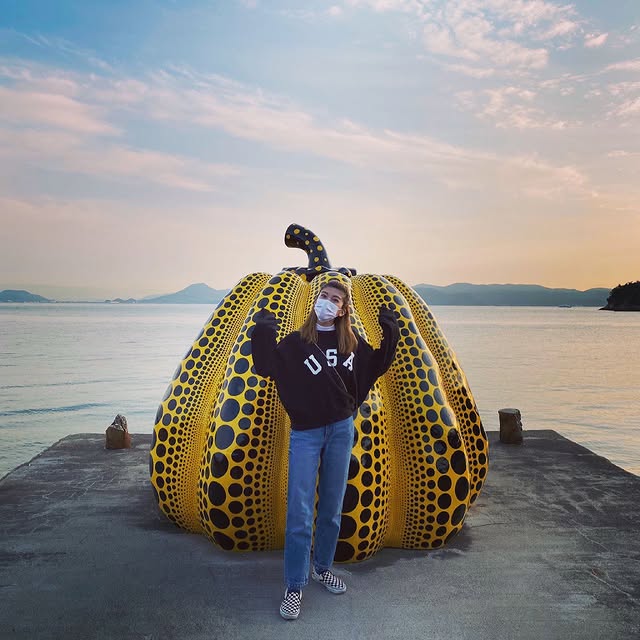
What makes it stand out is that it’s known as Japan’s “Art Island,” featuring stunning outdoor sculptures and modern architecture, all set against natural coastal backdrops.
Things to see and do:
- Spot the famous Yayoi Kusama pumpkin sculptures
- Visit the Chichu Art Museum (partly underground!)
- Explore Benesse House – a museum and hotel
- Discover art installations hidden in old village houses
- Enjoy peaceful beaches and sea views
Naoshima is a dream come true for art lovers and anyone wanting a relaxing, slow-paced trip with a creative twist. It’s not your typical Japanese destination- and that’s exactly why it’s such a gem. You’ll leave inspired, refreshed, and with a camera full of amazing shots.
Conclusion
Japan is a country that captures the heart at every turn. Whether you’re walking through centuries-old temples, riding roller coasters with Mount Fuji in the background, or simply enjoying sushi in a quiet street corner, there’s always something memorable waiting. Each destination- be it a natural wonder, cultural gem, or thrilling adventure- offers its own unique charm.
So pack your bags, follow the cherry blossoms, and let Japan’s beauty, spirit, and stories sweep you off your feet. Your next amazing trip starts here.
Frequently Asked Questions on the Best Places to Visit in Japan
What are the best places to visit in Japan?
Some of the best places to visit in Japan include Tokyo for its exciting city life, Kyoto for its ancient temples and geisha culture, Mount Fuji for stunning natural views, and Osaka for food and fun. Each destination offers a unique glimpse into Japan’s blend of tradition and modernity.
Which cities and attractions should I visit in Japan?
Top attractions in Japan range from the bustling streets of Tokyo and the heritage sites of Kyoto to the floating torii gate of Itsukushima Shrine and the magical world of Tokyo Disneyland. Whether you’re after culture, nature, or adventure, Japan has something for everyone.
Which are the best tourist destinations in Japan for first-time visitors?
If it’s your first time in Japan, don’t miss Kyoto’s historic temples, Tokyo’s bright cityscape, Hiroshima’s Peace Memorial Park, and the stunning views of Mount Fuji. These spots perfectly showcase Japan’s history, beauty, and spirit.